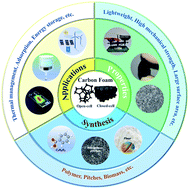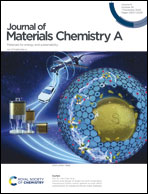Carbon foams: 3D porous carbon materials holding immense potential
Abstract
Carbon foam is a representative porous-structured carbon material. It has attracted increasing attention from academic communities and industry because of its unique 3D porous structure and excellent performance, such as low density with high mechanical strength, high electrical conductivity, tailorable thermal conductivities, high adsorption, electromagnetic shielding, ablation resistance, and large surface area. Tremendous achievements have been made in its synthesis and applications in the past few years. However, little effort has been devoted to providing a comprehensive review of recent progress. In the present review, the typical microstructure of carbon foam is firstly illustrated, which includes the open-cell structure and closed-cell structure. Secondly, advances in its synthesis approaches are summarized, according to the utilized precursors involving polymers, pitches, and biomass materials. Thirdly, the promising applications (e.g., thermal management, adsorption, energy storage, electromagnetic shielding, catalyst support, and sensors) are comprehensively reviewed. Among them, its applications for energy storage are systematically introduced, as this application has been extensively developed in recent years. In particular, the strategies for controlling its properties are mentioned. Finally, some critical issues and challenges that need to be tackled are discussed, like precise fabrication, scaling up production, etc. Besides this, the research prospects of carbon foam are proposed.

- This article is part of the themed collection: Journal of Materials Chemistry A Recent Review Articles


 Please wait while we load your content...
Please wait while we load your content...